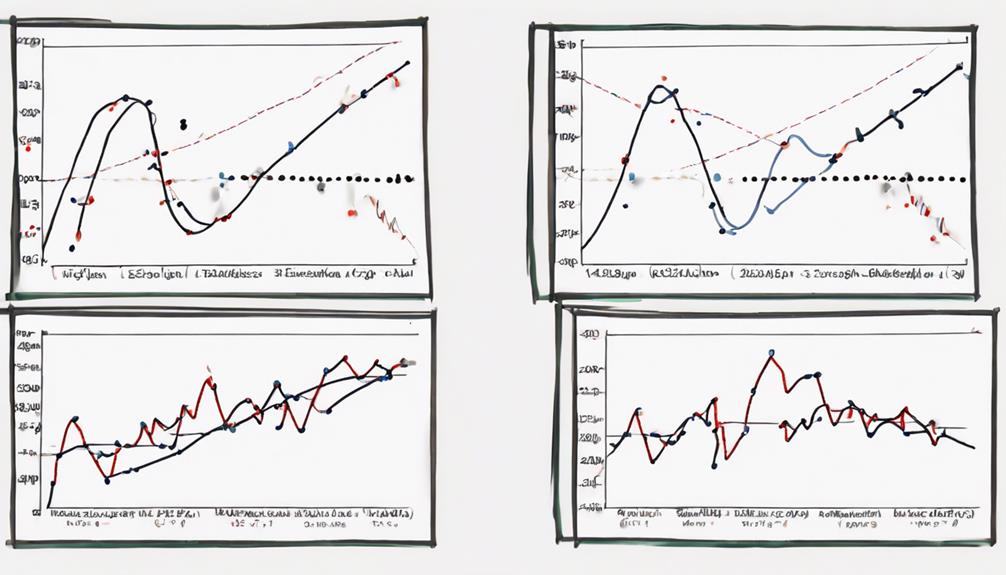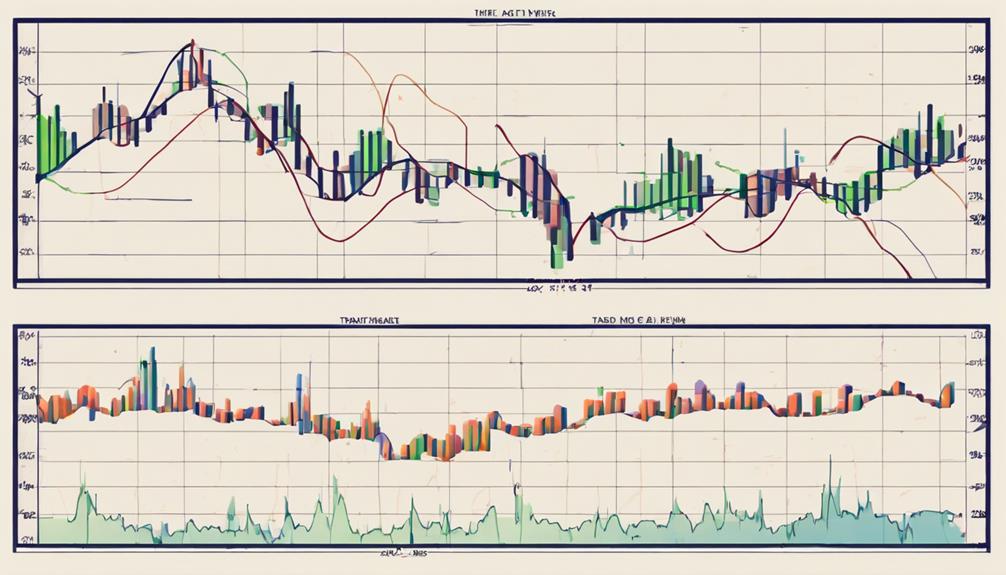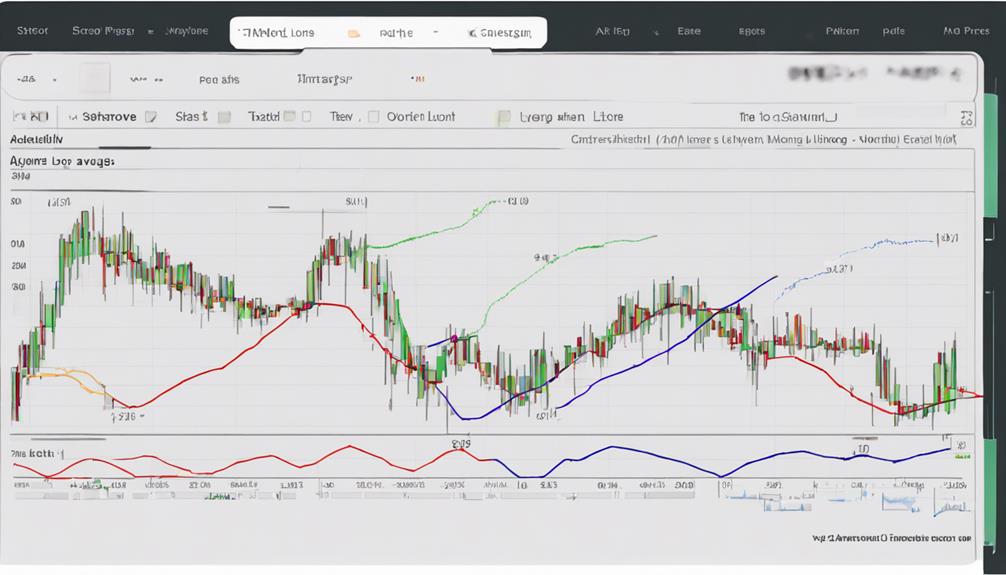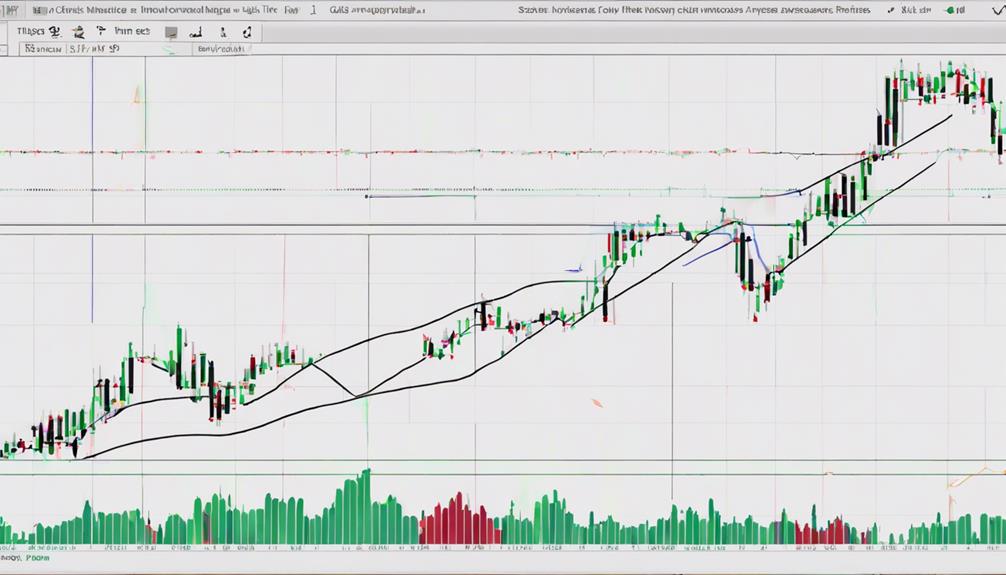When applying moving averages in technical analysis, did you know that over 70% of traders use moving averages as part of their trading strategy? Understanding how to effectively utilize moving averages can significantly impact your trading success.
By mastering three essential tips, you can enhance your ability to identify trends and make informed trading decisions.
Importance of Moving Averages
Moving averages play a critical role in technical analysis by providing traders with valuable insights into market trends and potential reversals. These averages smooth out price data, making it easier to identify the direction of a trend.
Traders often use moving averages to determine key support and resistance levels. By observing the relationship between the current price and moving averages, traders can anticipate potential trend changes or confirm existing trends.
Moving averages are versatile tools that can help traders spot trend reversals through crossovers, where short-term averages cross above or below longer-term averages. Understanding the significance of moving averages is essential for traders looking to make informed decisions based on technical analysis.
Different Types of Moving Averages

Among the various types of moving averages used in technical analysis, the Simple Moving Average (SMA) gives equal weight to all data points in its calculation.
The Exponential Moving Average (EMA) prioritizes recent prices, reducing lag compared to SMA, making it more responsive to price changes.
Weighted Moving Average (WMA) assigns varying weights to data points, offering flexibility in analysis.
Volume-Weighted Moving Average (VWMA) includes trading volume in its calculation process, providing a different perspective.
Smoothed Moving Average (SMMA), a variation of EMA with an extended period, offers smoother trend analysis.
Understanding these different moving averages is crucial for utilizing them effectively as technical indicators to identify support and resistance levels, analyze price trends, recognize moving average crossovers, and anticipate trend reversals.
Optimal Moving Average Length

The determination of the optimal length for a moving average in technical analysis hinges on your trading objectives and the specific timeframes you're considering. Shorter moving averages, such as the 10 or 20-day MA, are favored by short-term traders for their quick response to price changes, offering timely signals.
On the other hand, longer moving averages like the 200-day MA are commonly used for long-term trend analysis and making investment decisions. Adjusting the moving average length can enhance signal accuracy, helping fine-tune trading strategies.
It's essential to balance noise reduction and signal lag when selecting a moving average length, as this choice significantly impacts the effectiveness of technical analysis in interpreting market trends.
Effective Trading Strategies Using Moving Averages

Utilizing moving averages strategically enhances trading effectiveness and aids in identifying profitable market opportunities. When employing moving averages in your trading strategies, consider the following key points:
- Utilize the 50, 100, and 200-day moving averages: These are commonly used for gauging longer-term trends and potential trend reversals.
- Incorporate multiple moving averages: Combining various moving averages can provide stronger signals and confirm trend directions for more accurate trading decisions.
- Implement Golden Cross and Death Cross strategies: These crossover techniques use moving averages for trend confirmation, with the Golden Cross indicating a bullish trend and the Death Cross signaling a bearish trend.
- Adjust based on risk tolerance: Tailoring moving averages to your risk tolerance and trading goals is crucial for effective technical analysis strategies.
What are some advanced strategies for using moving averages in technical analysis?
When using moving averages in technical analysis, it’s essential to consider key moving average insights such as the golden cross and death cross. These advanced strategies help traders identify potential trend reversals and make informed decisions based on the crossovers between different moving averages.
Overcoming Moving Average Limitations

To enhance the effectiveness of utilizing moving averages in your trading strategies, it's essential to address and overcome the limitations associated with these historical indicators. Moving averages, while useful for identifying trends and potential support and resistance levels on a chart, have drawbacks. Market conditions may not always adhere to these levels, especially during choppy price action, leading to false signals.
They're more reliable in trending markets than in sideways or choppy conditions. Adjusting the time frame of moving averages can help mitigate issues with lagging indicators or false signals, providing a temporary solution. By recognizing these limitations and adapting your use of moving averages to suit different market environments, you can enhance their utility in technical analysis.
What Are the Most Important Tips for Using Moving Averages in Technical Analysis?
When using technical analysis, key insights moving averages can be very useful. The most important tip is to use multiple moving averages to confirm trends. Additionally, paying attention to the time frame and staying consistent with the chosen period is crucial for accurate analysis.
Frequently Asked Questions
What Is the 3 Moving Average Strategy?
The 3 moving average strategy involves analyzing trends using short-term, medium-term, and long-term moving averages. Traders seek crossovers between these averages to spot trend changes. It smooths price noise for clearer market direction.
What Are the Essential Moving Averages?
To understand essential moving averages, focus on the 50-day, 100-day, and 200-day averages. These key indicators reveal short, medium, and long-term trends, aiding traders in spotting market shifts. Analyzing crossovers between these averages informs strategic trading decisions.
What Is the Three Point Moving Average?
You calculate the three-point moving average by averaging the last three data points, smoothing price fluctuations and spotting short-term trends. Ideal for volatile markets, this method gives a quick pulse on the market direction.
Which Three Factors Are Important in Technical Analysis?
In technical analysis, three crucial factors are trend identification, support and resistance levels, and moving average crossovers. These elements help traders make informed decisions based on price movements and potential trend changes.
Conclusion
You've now mastered the art of using moving averages in technical analysis, but remember – sometimes the best trade is the one you don't make.
So, while moving averages provide valuable insights, don't forget to look at the bigger picture and consider all factors before making your move.
Happy trading!


